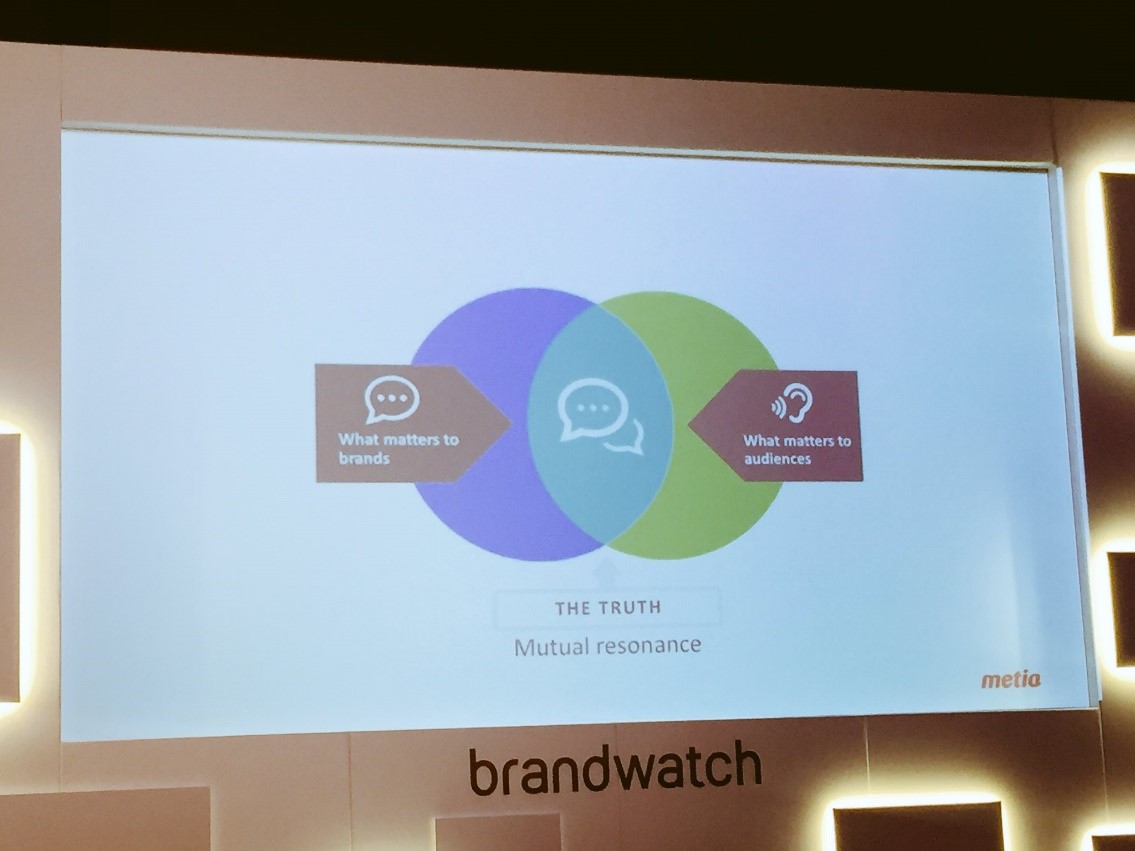Three things we learned from the Now You Know Europe conference
The Brandwatch Now You Know Europe conference last week was a fantastic opportunity to catch up on the latest developments in the world of social listening. Below we list our key takeaways for the two-day event that was held at the Park Plaza London Riverbank hotel and hosted by Brandwatch CMO Will McInnes.

Social listening technology has made great strides
Social media monitoring, a.k.a. social listening, is an area of marketing technology that has evolved hugely since it first came on the radar about a decade ago.
The Brandwatch tech team showcased an array of platform developments that underscore both the rapidly changing nature of social media, and also the opportunities available for brands to harvest insights.
The rise of big data, with its ability to process huge volumes of unstructured information quickly, is an opportunity to get faster and better insights from social channels, while also powering predictive analytics.
Amy Collins, the company’s VP of Product, Data, described “data as fuel for insights”, and explained how the company was diversifying its scope to get more insights from channels such as Instagram and Chinese microblogging site Sina Weibo, as well as more established networks such as Facebook and Twitter.
The audience heard that the average article published online only gets eight shares, showing the importance of understanding what content and formats work, and being able to shine a light on the types of content being amplified, and by whom.
Brandwatch earlier this month announced the acquisition of content marketing and influencer identification platform BuzzSumo, which focuses on helping companies analyse what content performs best for any topic or competitor.
Another increasingly important aspect of social media monitoring is the ability to analyse images as well as text, including company logos and emojis.
Brands need to find their ‘why’
The theme of Metia VP Misia Tramp’s keynote presentation was “social truth” and the need to understand the key attributes that drive customer experience.
She quoted U.S. film producer Robert Evans who famously said: “There are three sides to every story: your side, my side, and the truth. And no one is lying. Memories shared serve each differently.”
She explained that analysis of unstructured social data is a great way to understand how brands can find that middle ground – or “mutual resonance” - where the truth of a brand’s story matches the experiences and needs of the consumer.

As well as gaining insights from social media, brands can also align their messaging with what consumers are actually saying, and make it more personalised based on their “tribal allegiance”.
Another key takeaway from Misia’s talk was the need to focus on minimising customer effort rather than “surprising and delighting” them, which she suggested was now a dated business mantra.
Later on the opening day of the conference, Hootsuite’s EMEA senior manager for content and social marketing, Elizabeth Knights-Ward, also spoke about the need to strike the right tone with consumers, in a presentation that outlined four rules for resonating and engaging with customers.
She ran through some powerful stats about the growth of social, including how Instagram only took 18 months to reach 50 million users. It now has more than 10 times that number of active daily users, according to Statista.
The key to successful engagement with social media is understanding human motivations, such as knowledge, social approval, companionship and money. “If you put the human first, the tech side of things will fall into place,” she said.
The schedule has become a stream
There has been a fundamental shift in the way that content is now being consumed from the time-honoured radio- and TV-oriented schedules of the 20th century to the “stream” that now dominates our lives in the age of social media.
Matt Locke, director at content studio Storythings, described in fascinating detail the origins of the schedule in radio broadcasting, dating back more than 100 years, and how the concept was then adopted by television networks.
While the schedule is synchronised, homogenous and regulated, the stream has become a new paradigm for organising people’s attention in a way that is personalised, mobile, de-contextualised and endless.
The stream is also defined by its power to amplify strong emotional signals, but there is a dark side in the way that fake news can be spread more easily without any context, and the ease with which unverified stories from dubious sources can be circulated.
As voice technology – and indeed robot voices - become more dominant in our lives, the lack of nuance and understanding around context will become an even greater challenge, he argued.
The stream has also redefined the length of stories, with both shorter and longer forms of content being monetised effectively. The attention span has in some ways actually become much bigger, rather than being attenuated, as many people had anticipated.
According to Matt: “The stream will dominate the 21st century in same way that the schedule dominated in the previous century.” It is difficult to argue.